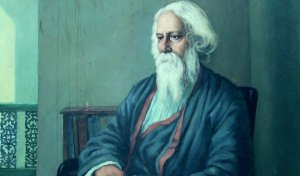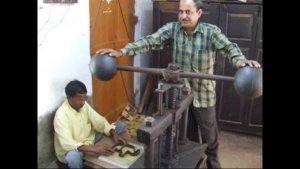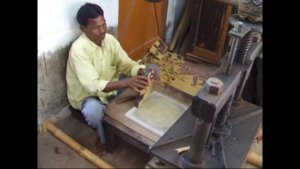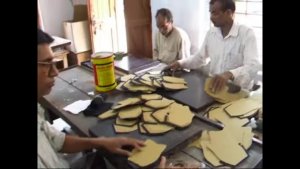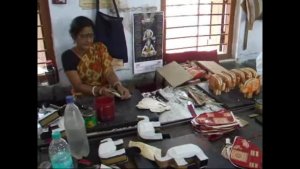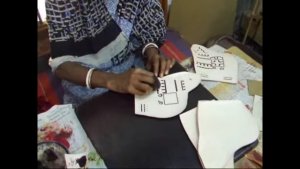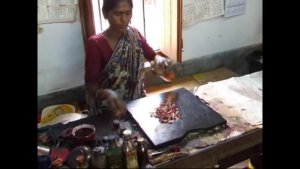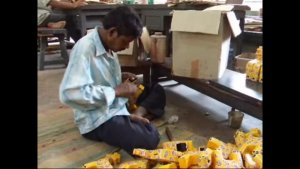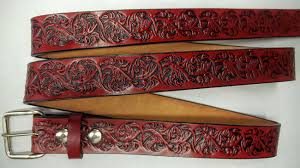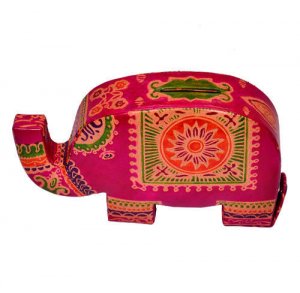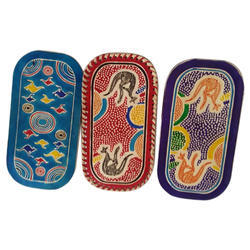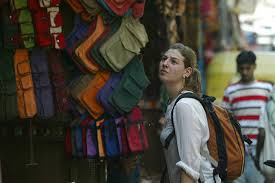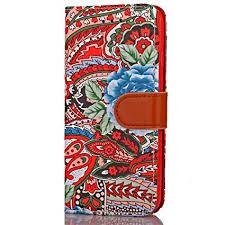West Bengal is known for leather craft in the whole world. Especially, the Shantiniketan region in West Bengal is famous for its beautifully handcrafted leather handbags and other accessories.
It is a perfect example of the superior workmanship of the local artisans. Bengal leather goods or Shantiniketan leather goods are leather products made in Shantiniketan and surrounding villages near Kolkata, West Bengal, India.
Shantiniketan Embossed Leather Work
The craft created here is called embossed leather craft. Embossed leather products are made using vegetable tanned goatskin leather. Every piece is embossed using a metal die, after which it is individually painted by hand using spirit colors.
Each product is then constructed by hand. The craft person’s meticulous eye for detail makes every product unique. As the leather is used, the colors become deeper and the leather becomes softer until it becomes an integral part of your life.
Its artistic leather bags are popular in foreign markets and are exported to many countries including Japan and the U.S. They are generally made of a special type of leather called E.I. Leather (East India Leather) from sheepskin and goatskin.
In July 2007, this product was listed as “Santiniketan Leather Goods” under the GI Act 1999 of the Government of India with registration confirmed by the Controller General of Patents Designs and Trademarks under Class 18 Handicraft goods wide application number 509 for the dated 12 July 2007.
History of Bengal Leather Crafts –
Production of these crafts was started as a cottage industry about 80 years ago in a few villages surrounding Santiniketan and marketed at the Bhuban Danga Market. The craftsmen of the villages were trained under the Rural Development Programme of Vishwa Bharti University at Santiniketan.
This particular craft employs the cutting, polishing and embossing of leather by hand painting and was first introduced in West Bengal during the 1940s. It derives its name from the place where it was first introduced Shantiniketan and was patronized by Shri Rabindra Nath Tagore who revived a number of crafts that were nearing redundancy in Shantiniketan.
Embossed leather work on goatskin has been a specialty of West Bengal since the 1940s. Rabindra Nath Tagore and his wife, expert craftsmen came together to revive leather bag and making in an innovative manner.
Raw materials used in production –
The raw materials used in making these goods are classified according to the grain quality and smoothness as E.I. Tanned leathers of sheepskin or goatskin that are dyed with vegetable colours. Three leather types are defined: “Paper” which has a coarse grain and spots is the skin of larger goats or sheep, and “Bind” and “Kid” which are both derived from smaller animals and are of superior quality.
Other materials used to make the final product include paper board of varying thickness, cotton, velvet or silk for lining, foam rubber for padding, natural dyes and spirit, rubber solution, and assorted sundries. The raw materials required for making these elegant leather bags is leather (vegetable tanned), PCP free chemical and vegetable-based pigment colors.
Tools used in making –
Tuli (brush), thukni (hammer), glass paperweight/glazing machine, scissors, mouth spray, dyes, ball press machine.
Process of Manufacture –
The vegetable tanned skins used in production have the quality of permanently retaining the embossed imprint of motifs or batik. A cotton pad or a glass, which has a smooth surface, is used to make the grains of the leather shine. The leather is first cut into desired pieces.
Previously Shantiniketan leather craft was made completely using hand and some simple tools. But nowadays some simple machines are used for making craft items, though the process of craft has not been modernized yet.
- a) Leather is cut into required pieces
b) Then wooden bases is prepared
c) Then designs are prepared on leather pieces
d) Natural colours are prepared
d) After colouring of the craft, final touch is given
The E.I. tanned leathers, which are marketed in rolls with three or four skins, are coated with a preservative of Epsom salt to inhibit oxidation. The skins, after intensive washing, are immersed in a wooden vat or pit. They are then taken out and flattened by pulling and then dried. After drying, designs are drawn on the leather and the leather is cut to the required size to make the desired products.
Present Day Scenario –
Today, Shantiniketan leather craft is a successful industry and is a craft that is practiced only in 24 Parganas of West Bengal. The Shantiniketan style evolved as a result of the Art Movement and these products have now become world famous for their applique, batik and embossed craft work. Now even modern items such as belts, mobile cover, handbags are also made by a craftsman.
Products –
The products manufactured and marketed are in the form of coin bags, chappal, handbags, pouches, jewelry boxes, pencil boxes, eyeglass covers, bags, ladies’ bags, piggy banks, cushion covers, sandals, wallets, and many more. Shantiniketan bags are not only beautiful in appearance, but are also very affordable.
There is a wide range of bags available in the market in terms of colors, shapes, designs, and forms. As the industry has become competitive many modern trends have been incorporated. From belts to juttis and mobile covers, there is a host of other things that are made with this craft. The most appealing quality of these Indian leather bags are the traditional motifs that depict floral and geometric designs and the natural dyes used in the process give it a very classy look.
Global Appeal –
Shantiniketan products have a creative interpretation of nature and an inimitable style that is appreciated by craft enthusiasts all across the globe. This thriving industry is now being given considerable financial and technical help from both the Government and NGOs to enable its further expansion globally. Today, Shantiniketan leather craft is not only accepted in India but is appreciated even outside India. These crafts also attract attention from foreigners.
Innovations –
Shantiniketan purses and bags are particularly appreciated by the local womenfolk and the tourists. Combining the new designs with this old form of art has given a boom to these industries. In fact, a lot of bag designers have come out with innovative collections to create sophisticated and stylish Shantiniketan designer collections.
From wallets to bags, purses and coin holders, Shantiniketan leather is used in a wide range of products. The vibrant colors, designs, and high-quality leather have also made it a preferred product to export overseas. However, since this craft is relegated to the rural villages of West Bengal with limited artisans, their capacity to cater to overseas markets in a big way is rather limited.
Conclusion –
Bengal embossed leather craft is a reflector of our historical art. It also defines art and culture at the times of Rabindranath Tagore. Today it has got global acceptance and is growing to become a global brand. These craft style will not only represent India with a new dimension in the global market but will also help in the empowerment of craftsmen in Bengal.
It will open new economic gates for them and will help in keeping these beautiful traditions alive. So it haves economical importance, cultural and traditional importance and most importantly it will bring India’s beautiful craft work in front of the whole world.



